Search Results for 'Galway Archaeological and Historical Society'
23 results found.
The sinking of the Neptune
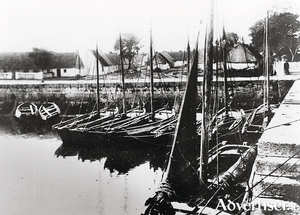
This photograph was taken about 100 years ago and shows several boats from the Claddagh fleet moored at the quayside.
The Lion’s Tower
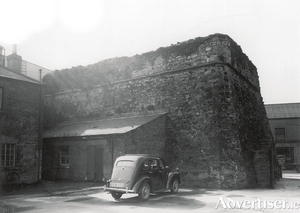
The Lion’s Tower was part of the old city wall. In the last century, it was situated on Eglinton Street between the Garda Barracks and the Savoy Cinema. Our photograph today, which we show you courtesy of the Board of Works, dates from about 1950 and shows the tower as seen from the yard beside the barracks.
Public lecture on the Eyres of Eyreville
The Eyre family of Eyreville, County Galway, will be the subject of the public lecture from the Galway Archaeological and Historical Society in the Harbour Hotel on Monday April 10 at 8pm.
Poorhouse from Galway
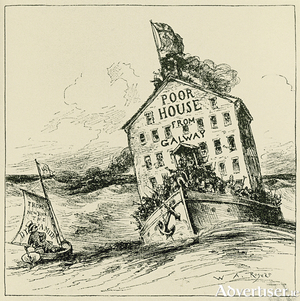
“With giant strides destitution and misery progress — the wants of the people daily and hourly progress — the cries for succour and assistance go forth, and ere long, even now, the distress of the poor has attained a degree fearful to contemplate. Turn to what quarter we may, the same dismal tale is told to us — in every direction we see countenance wan with care and hunger. In a like condition are the inhabitants of the rural districts, and we find that parishes — Annadown for instance, which used to supply the markets of Galway so abundantly, after supporting its own people in comfort, are now reduced to a most pitiable condition. There indeed, some of the landlords, at least those who reside at home, have stepped forward seasonably to the relief of their fellow creatures, and headed by the Cregg family, ever remarkable for their benevolence, seem resolved to do their duty.”
Claregalway heroes
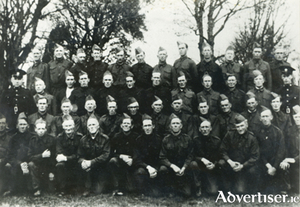
In the years following the establishment of the Defence Forces, various classes of Army Reserves were experimented with between 1927 and 1939. In May 1927, a Class A Reserve was formed consisting of NCOs and men transferred to the Reserve. In January 1928, a Class B Reserve was set up with the object of building up the infantry arm of the Defence Forces. One joined voluntarily, but in doing so, committed to three months initial training and one month’s annual training thereafter. This group had practically ceased to exist by 1934.
One hundred and seventy five years of Mercy education in Galway
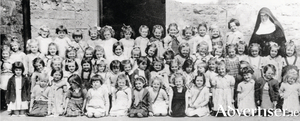
The Sisters of Mercy came to Galway on May 1 1840. They started, in extremely difficult circumstances, in Lombard Street with three postulants. The need for uncloistered sisters who would be free to go about the streets and visit the poor in home, hospital, and jail was very great at the time. They were out and about the day after their arrival. An epidemic of cholera had broken out and they helped to nurse the ill and alleviate distress. They quickly prospered to become “Reputedly the best institution that ever was in Galway”.
Connecting medieval and modern Mayo
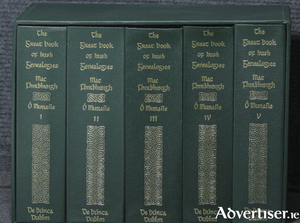
If you have ever attempted to compile your family tree you may have already felt that sense of frustration when you realise that all accessible leads have been exhausted. Truthfully, at that point there is also a feeling of relief. Relief in the knowledge that there are no more stones to overturn, that you can finally park the family tree as being ‘finished’, which of course it never is. If, like the majority of the county, your ancestry is Irish and Catholic, you will be fortunate to trace your pedigree back to the relatively recent 18th century. The reason being that State registering of births, deaths, and marriages did not begin until 1864 and the earlier recording of this information by Catholic clergy in their parishes was haphazard. The earliest parish records for Aughaval (Westport) only begin in 1821. Records for Kilmoremoy (Ballina) and Aglish (Castlebar) begin in 1823 and 1824, respectively. For information before the early 19th century, the amateur genealogist is largely dependent on luck and supposition.
St Michael’s GAA Club, sixty years
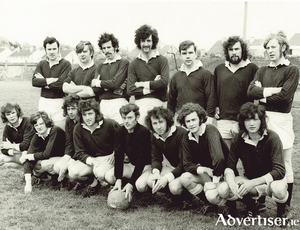
St Michael’s Club was formed in 1956 after Galway won the All-Ireland football final. The first AGM was held in Tom Connolly’s house in Lower Shantalla Road, and they played their first game in 1957. Among those who founded the club were Pa Boyle (whose brainchild it was), Mick O’Toole, John Duignan, Mick Higgins, Liam Cunningham, and Sergeant O’Toole. They started as a dual club, but after a few years they concentrated solely on football.
The end of the Galway Line?
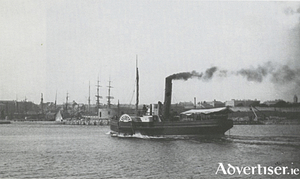
General Robert E Lee’s surrender to the the Union army at Appomattox court house on the morning of April 9 1865, brought the four year Civil War to a close.


